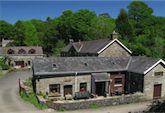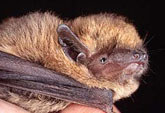Mammals are a class of animals that breathe air, have backbones, are hairy, have warm blood, give live birth and feed milk to their young. Humans are mammals. Over 60 species of mammal are believed to breed in Britain. Roughly a quarter of them have been introduced by man. How many countryside mammals can you spot living at Plas Farm? They can be very difficult to spot but you should see rabbits, sheep, cows and grey squirrels around the farm and holiday cottages. Other mammals to have been spotted are Pipistrelle bats, badgers, moles, foxes, stoats, an American Mink and various small furry things that our cats have caught over the years.
Mammal Spotting – Grey Squirrel at Plas Farm in Wales
Mammals are generally classified into nine groups (called orders):
1. Artiodactyls (deer)
2. Carnivores (foxes, wildcats and mustelids)
3. Cetaceans (whales, dolphins and porpoises)
4. Chiroptera (bats)
5. Insectivores (hedgehogs, moles, and shrews)
6. Lagomorphs (rabbits and hares)
7. Marsupials (wallabies and kangaroos)
8. Pinnipeds (seals)
9. Rodents (mice, rats and voles)
LIST OF BRITISH MAMMALS
Britain’s mammal fauna is somewhat impoverished compared to that of continental Europe due to the short period of time between the last ice age and the flooding of the land bridge between Britain and the rest of Europe. Only those land species which crossed before the creation of the English channel, and those introduced by man exist in Britain. There are no endemic mammal species in Britain (that is, there are no mammal species native to only this region). Here is Wikipedia’s current list of :
INSECTIVORA
1. European Hedgehog Erinaceus europaeus
2. European Mole Talpa europaea
3. Common Shrew Sorex araneus
4. Eurasian Pygmy Shrew Sorex minutus
5. Water Shrew Neomys fodiens
6. Greater White-toothed Shrew Crocidura russula (Probably introduced)
7. Lesser White-toothed Shrew Crocidura suaveolens (Probably introduced)
CHIROPTERA
8. Greater Horseshoe Bat Rhinolophus ferrumequinum
9. Lesser Horseshoe Bat Rhinolophus hipposideros
10. Greater Mouse-eared Bat Myotis myotis (vagrant)
11. Whiskered Bat Myotis mystacinus
12. Brandt’s Bat Myotis brandti
13. Natterer’s Bat Myotis nattereri
14. Bechstein’s Bat Myotis bechsteini
15. Daubenton’s Bat Myotis daubentoni
16. Parti-coloured Bat Vespertilio murinus (vagrant)
17. Serotine Eptesicus serotinus
18. Northern Bat Eptesicus nilsonni (vagrant)
19. Common Noctule Nyctalus noctula
20. Leisler’s Bat Nyctalus leisleri
21. Hoary bat Lasiurus cinereus (vagrant)
22. Common Pipistrelle Pipistrellus pipistrellus
23. Soprano Pipistrelle Pipistrellus pygmaeus
24. Nathusius Pipistrelle Pipistrellus nathusii
25. Barbastelle Barbastella barbastellus
26. Brown Long-eared Bat Plecotus auritus
27. Grey Long-eared Bat Plecotus austriacus
CARNIVORA
28. Wolf Canis lupus (Extinct in Britain)
29. Red Fox Vulpes vulpes
30. Brown Bear Ursos arctos (Extinct in Britain)
31. Pine Marten Martes martes
32. Stoat Mustela erminea
33. Weasel Mustela nivalis
34. Polecat Mustela putorius
35. American Mink Mustela vison (Modern introduction for fur farming)
36. Eurasian Badger Meles meles
37. Eurasian Otter Lutra lutra
38. Wild Cat Felis sylvestris
39. Eurasian Lynx Lynx lynx (Extinct in Britain)
40. Grey Seal Halichoerus grypus
41. Common Seal Phoca vitulina
42. Ringed Seal Phoca hispida (vagrant)
43. Bearded Seal Erignathus barbatus (vagrant)
44. Hooded Seal Cystophora cristatus (vagrant)
45. Walrus Odobenus rosmarus (vagrant)
LAGOMORPHA
46. Mountain Hare Lepus timidus
47. European Hare Lepus europaeus (Possibly introduced)
48. European Rabbit Oryctolagus cuniculus (Roman and/or Norman introduction for food)
ARTIODACTYLA
49. Wild Boar Sus scrofa (Extinct in Britain but locally reintroduced)
50. Aurochs Bos primigenius (Extinct, ancestor of domestic cattle)
51. Elk Alces alces (Extinct in Britain)
52. Red Deer Cervus elaphus
53. Sika Deer Cervus nippon (Modern introduction)
54. Fallow Deer Dama dama (Norman introduction for sport)
55. Roe Deer Capreolus capreolus
56. Chinese Muntjac Muntiacus reevesi (Modern introduction)
57. Chinese Water Deer Hydropotes inermis (Modern introduction)
RODENTIA
58. Red Squirrel Sciurus vulgaris
59. Grey Squirrel Sciurus carolinensis (Modern introduction)
60. Hazel Dormouse Muscardinus avellanarius
61. Edible Dormouse Glis glis (Introduced)
62. Harvest Mouse Micromys minutus (Probably introduced)
63. Wood Mouse Apodemus sylvaticus
64. Yellow-necked Mouse Apodemus flavicollis
65. House Mouse Mus domesticus (Introduced)
66. Black Rat Rattus rattus (Introduced)
67. Brown Rat Rattus norvegicus (Introduced)
68. Bank Vole Myodes glareolus
69. Field Vole Microtus agrestis
70. Common Vole Microtus arvalis (Probably introduced)
71. Root Vole Microtus oeconomus (Extinct in Britain)
72. Water Vole Arvicola terrestris
73. Musk Rat Ondatra zibethica (Introduced and exterminated)
74. Coypu Myocastor coypus (Introduced and exterminated)
75. European Beaver Castor fiber (Extinct, now reintroduced)
PRIMATES
76. Human Homo sapiens
MARSUPIALIA
77. Red-necked Wallaby Macropus rufogriseus (Modern introduction)


